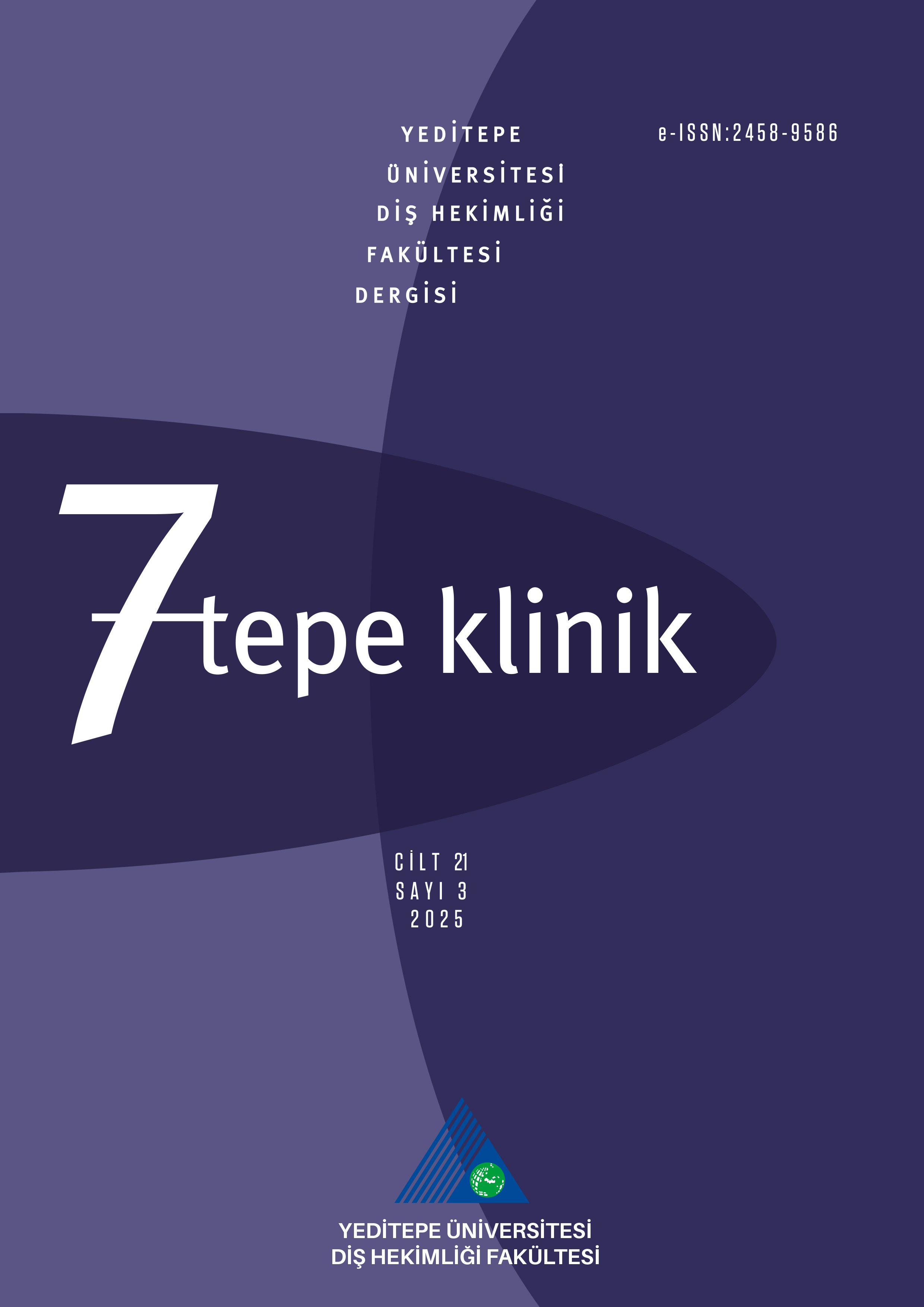Konik ışınlı bilgisayarlı tomografi kullanarak submandibular fossa derinliğinin değerlendirilmesi
Mehmet Oğuz Borahan, Fatma Güler Dönmez, Gamze Ulay, Ayşe Nur Yıldız Sadıkoğlu, Filiz Namdar PekinerMarmara Üniversitesi, Diş Hekimliği Fakültesi, Ağız, Diş ve Çene Radyolojisi Anabilim Dalı, İstanbulGİRİŞ ve AMAÇ: Submandibular fossa (SF) varlığı posterior mandibular bölgeyi özellikle implant tedavisi için önemli bir anatomik bölge haline getirir. Bu nedenle, diş hekimleri tedaviden önce dikkat etmelidirler. Bu çalışmanın amacı, bir grup hastada konik ışınlı bilgisayarlı tomografi (KIBT) kullanarak SF derinliğini retrospektif olarak değerlendirmektir.
YÖNTEM ve GEREÇLER: Bu çalışmada, 2013-2016 yılları arasında Marmara Üniversitesi Oral Diagnoz ve Radyoloji Anabilim Dalına başvuran ve KIBT çekilerek, resim arşivleme ve iletişim sistemine (PACS) eklenen 300 erişkin hastanın dataları kullanılmıştır. Bilateral SF derinliği KIBT görüntüleri üzerinden değerlendirilmiştir. Derinliğe göre üç farklı SF tipi sınıflandırılmıştır: tip I; konkavite <2 mm, tip II; 2-3 mm konkavite ve tip III; konkavite> 3 mm.
BULGULAR: Sağ SF derinliği 143 hastada tip I, 117 hastada tip II ve 38 hastada tip III olarak görülmüştür. Sol SF derinliği 150 hastada tip I, 116 hastada tip II ve 42 hastada tip III olarak görülmüştür. Her iki tarafta tip I SF daha fazla oranda tespit edilmiştir.
TARTIŞMA ve SONUÇ: Olası komplikasyonlar dikkate alındığında, SF derinliğinin preoperatif olarak değerlendirmesi güvenli bir cerrahi için önemlidir. Bu çalışma, KIBT'in bu bölgenin kapsamlı olarak değerlendirmesi için faydalı olduğunu ortaya koymuştur.
Anahtar Kelimeler: Submandibular fossa, radyoloji, konik ışınlı bilgisayarlı tomografi.
Assesment of submandibular fossa depth using cone beam computed tomography
Mehmet Oğuz Borahan, Fatma Güler Dönmez, Gamze Ulay, Ayşe Nur Yıldız Sadıkoğlu, Filiz Namdar PekinerMarmara University, Faculty of Dentistry, Department of Oral Diagnosis and Radiology, İstanbul, TurkeyINTRODUCTION: Due to the presence of submandibular fossa (SF), the posterior mandible is an significant anatomic region which should be taken into consideration before dental surgery. The aim of this study was to assess the SF depth in a group of patients using cone-beam computed tomography (CBCT) retrospectively.
METHODS: The subjects for this retrospective study consisted of all 300 adult patients who visited the department of Oral Diagnosis and Radiology at Marmara University, and underwent a single CBCT examination. The CBCT data were picked up from the picture archiving and communications system (PACS) from the period of 2013 to 2016. Bilateral SF depths were evaluated on CBCT images. Three different SF types were categorized according amount of depth: type I; concavity depth <2 mm, type II; concavity depth between 2-3 mm and type III; concavity depth >3 mm.
RESULTS: For the right SF depth measurements, 143 patients were found to be type I, 117 patients were type II and 38 patients were type III. For the left SF depth measurements, 150 patients were type I, 116 patients were type II and 42 patients were type III. Type I SF depth was more common in both submandibular fossa.
DISCUSSION AND CONCLUSION: Considering the possible complications, preoperative assessment of SF depth is crucial for safe surgery in the posterior mandible. Use of CBCT enhances comprehensive evaluation of this particular anatomic region.
Keywords: Submandibular fossa, radiology, cone beam computed tomography
Makale Dili: İngilizce



